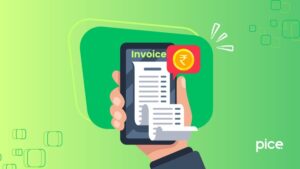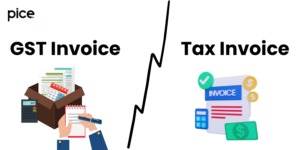GST Rate for Bamboo Products
- 17 Aug 24
- 10 mins

GST Rate for Bamboo Products
Key Takeaway
- The GST rate for bamboo products is set at 12%, aiming to promote the use of sustainable and environmentally friendly materials.
- Bamboo enjoys a favorable GST rate compared to traditional wood products, reflecting its status as a sustainable resource.
- The unified GST rate has simplified the market for bamboo products, aiding in the expansion and innovation within the industry.
- Lower GST rates on bamboo products support market competitiveness and make them a cost-effective alternative to traditional materials.
- The strategic GST framework for bamboo aligns with environmental goals, fostering the adoption of bamboo in sustainable development projects.
Bamboo is increasingly recognized for its versatility and sustainability, making it a popular choice in various industries, from construction to consumer goods. Understanding the GST (Goods and Services Tax) implications for bamboo and its products is crucial for manufacturers, businesses, and consumers alike.
GST Rate of Bamboo Products
The GST rate for bamboo products is generally set at 12%. This rate applies to most products made primarily from bamboo, including furniture, mats, and other handicraft items. The tax rate aims to promote the use of sustainable and environmentally friendly bamboo materials by keeping it lower compared to some other materials which might attract higher rates.
Impact of GST on Bamboo Industry and Market

The implementation of a unified GST rate for bamboo products has had a significant and largely positive impact on the bamboo industry and market. Here are some key impacts:
- Market Expansion: The uniform tax rate has simplified the regulatory environment, making it easier for bamboo product manufacturers to sell across state lines without navigating varying tax rates. This has helped small and medium enterprises (SMEs) expand their market reach.
- Cost-Effectiveness: By setting a lower GST rate on bamboo products, the government has made these items more cost-effective compared to other higher-taxed materials. This price advantage can make bamboo products more attractive to consumers, increasing their marketability.
- Investment and Innovation: The favorable GST treatment has encouraged investment in the bamboo sector. With more funds flowing into the industry, there's an increase in innovation related to bamboo products, ranging from construction materials to consumer goods.
- Sustainability Focus: The encouragement of bamboo usage through lower GST rates aligns with broader environmental objectives. Bamboo is a highly sustainable resource due to its fast growth rate and carbon sequestration ability, making it a preferred choice in green building projects and eco-friendly product manufacturing.
Overall, the GST rate of 12% for bamboo products supports the industry's growth by making these products economically viable and environmentally attractive, fostering both market expansion and sustainability initiatives.
Comparative Analysis: Bamboo GST Rate vs. Other Wood Products
When comparing the GST rates of bamboo products to other wood products, it's evident that bamboo enjoys a favorable position, reflecting its status as a sustainable resource and the government's intent to promote environmentally friendly materials.
Bamboo Products
Bamboo products generally attract a GST rate of 12%. This includes items such as bamboo furniture, baskets, and other handicrafts. The relatively low rate is part of a strategic effort to encourage the use of bamboo, given its eco-friendly credentials—it grows quickly, requires less water, and sequesters carbon at a higher rate than most trees.
Traditional Wood Products

In contrast, traditional wood products can attract varying GST rates depending on their use and level of processing:
- Raw Wood (Logs): Wood in its raw form usually falls into a lower tax bracket, typically around 5%, because it is considered a basic need for industries like furniture making and construction.
- Plywood and Veneered Panels: More processed wood products such as plywood and veneered panels are taxed at 18%. These products are extensively used in the building and furniture-making industries, where higher processing and value addition take place.
- Luxury Wooden Furniture: At the higher end of the spectrum, luxury wooden furniture can attract a GST of 28%. This high rate is applied to items that are considered luxury goods, reflecting their non-essential nature and higher economic value.
The differential GST rates for wood products aim to balance economic development with environmental sustainability. While lower rates for raw and sustainable materials support basic industry needs and green practices, higher rates for processed and luxury items regulate consumption patterns that may have larger environmental footprints.
GST Rate Table for Bamboo and Other Wood Products
Here is a table that compares the GST rates for bamboo products with other wood products:
| Product Type | Material | GST Rate |
|---|---|---|
| Bamboo products | Bamboo | 12% |
| Raw wood | Wood | 5% |
| Plywood and veneered panels | Wood | 18% |
| Luxury wooden furniture | Wood | 28% |
This table illustrates the strategic use of GST to promote environmental sustainability through the taxation of bamboo and other wood products. By fostering a market preference for sustainable materials like bamboo, the GST framework not only supports the bamboo industry but also contributes to broader ecological objectives.
💡If you want to pay your GST with Credit Card, then download Pice Business Payment App. Pice is the one stop app for all paying all your business expenses.
GST Compliance Tips for Bamboo Product Manufacturers

Navigating the GST landscape can be complex, especially for manufacturers who are just starting out or those who are expanding their product lines. For bamboo product manufacturers, compliance with GST is crucial not only for avoiding legal pitfalls but also for maximizing operational efficiencies. Here are some essential GST compliance tips for bamboo product manufacturers:
1. Understand the Correct GST Rate
First and foremost, it's crucial to apply the correct GST rate of 12% on bamboo products. Incorrect application of tax rates can lead to penalties and audits. Manufacturers should stay updated with any changes in tax rates or regulations announced by the GST council.
2. Proper HSN Code Classification
Each product under the GST has an assigned Harmonized System of Nomenclature (HSN) code. For bamboo products, identifying the correct HSN code is essential for proper tax filing and compliance. This helps in avoiding misclassification which could lead to tax discrepancies.
3. Maintain Accurate Records
Keeping meticulous records of all transactions, including purchases, sales, and inventory, is imperative. Accurate record-keeping not only aids in correct GST filing but also simplifies the audit process. It provides a clear trail of all business activities, which is valuable during tax assessments or inspections.
4. Leverage Technology for Compliance
Utilizing GST-compliant accounting and inventory management software can significantly ease the burden of GST compliance. Such tools help automate tax calculations, generate GST-compliant invoices, and prepare returns, thereby reducing the chances of human error and increasing efficiency.
5. Regular GST Training and Awareness
Bamboo product manufacturers should invest in regular training for their accounting and finance teams to ensure they are well-versed in GST procedures and updates. Keeping the team informed about GST laws and practices can prevent compliance issues and foster a proactive approach to tax management.
6. Engage a GST Consultant
Especially for small to medium-sized enterprises (SMEs), consulting with a GST expert can be beneficial. A professional can provide tailored advice, help navigate complex tax issues, and offer strategies for efficient tax planning and compliance.
7. Prepare for GST Audits
Being prepared for a GST audit by regularly reviewing tax filings and ensuring all documentation is in order can alleviate the stress of compliance. Regular internal audits or checks by external auditors can help ensure that the business is consistently aligned with GST regulations.
Future Trends: How GST Influences Bamboo Sustainability Initiatives?
The application of the Goods and Services Tax (GST) on bamboo products at a relatively lower rate of 12% is a strategic move by the government to promote sustainable practices and support the growing bamboo industry. This favorable taxation reflects an acknowledgment of bamboo's environmental benefits and its potential role in future sustainability initiatives. Here's how GST is expected to influence these trends moving forward:
Promoting Eco-Friendly Production
The lower GST rate on bamboo products makes these items more financially attractive for both producers and consumers. This financial incentive is crucial as it encourages manufacturers to invest in and expand their range of bamboo products. By reducing the cost of eco-friendly alternatives, GST is helping shift the market towards more sustainable production practices.
Enhancing Market Competitiveness
With the competitive pricing enabled by a lower GST rate, bamboo products can compete more effectively with other materials that may not be as environmentally friendly but have traditionally dominated the market, such as plastics or non-sustainable wood products. This competitiveness is expected to increase the market share of bamboo products, thereby supporting the broader adoption of sustainable materials.
Encouraging Innovation and Diversification
The economic benefits facilitated by the GST framework can also drive innovation within the bamboo sector. Manufacturers might invest more in research and development to explore new uses for bamboo, ranging from textiles and bioenergy to construction and paper products. Such diversification not only expands the bamboo market but also integrates bamboo more deeply into various sustainable development goals.
Supporting Local Economies
Bamboo cultivation and product manufacturing predominantly take place in rural areas. The growth of this industry, supported by GST incentives, can have a significant positive impact on local economies. It creates jobs and provides stable income sources, contributing to rural development and poverty alleviation, which are key aspects of sustainable development.
Aligning with Global Environmental Goals
As the world increasingly focuses on reducing carbon footprints and enhancing sustainability, the GST's role in promoting bamboo can align India's market practices with global environmental goals. By supporting the bamboo industry, GST helps reduce deforestation (as bamboo is a viable alternative to traditional wood), lowers carbon emissions (due to bamboo’s rapid growth rate and carbon sequestration capabilities), and promotes the use of renewable resources.
 By
By 

















